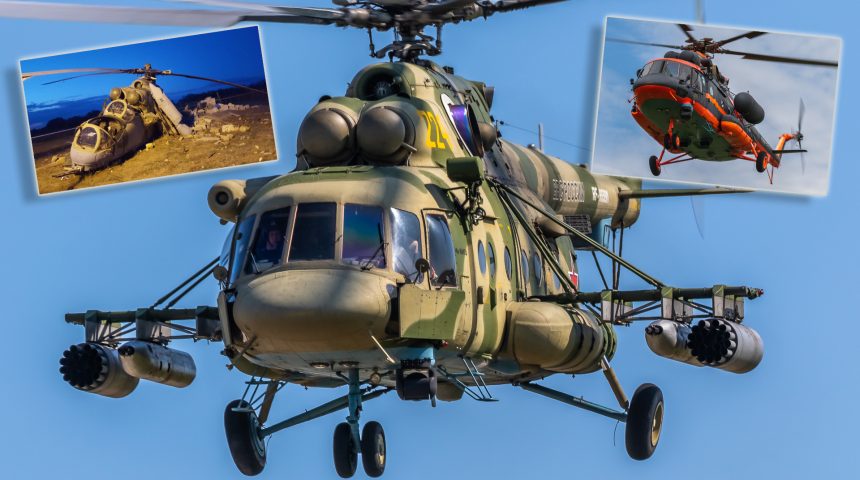A Mi-8MTSh-AV crash today is just the last in a series of recent helicopter incidents in Russia.
Four crew members of Long Range Aviation regiment perished in the crash of a Mi-8AMTSh-VA – the special Arctic version of Mi-8 “Terminator” – on Tuesday May 26, 2020. The crash, occurred in the Far East, Coal Mines (“Ugolnye Copy”) military base at Anadyr city.
Information is still scarce, but there is an official statement from Ministry of Defence: “According to preliminary information, the cause of the disaster could be a technical malfunction. A commission of the Aerospace Forces High Command is on the way to the site.”
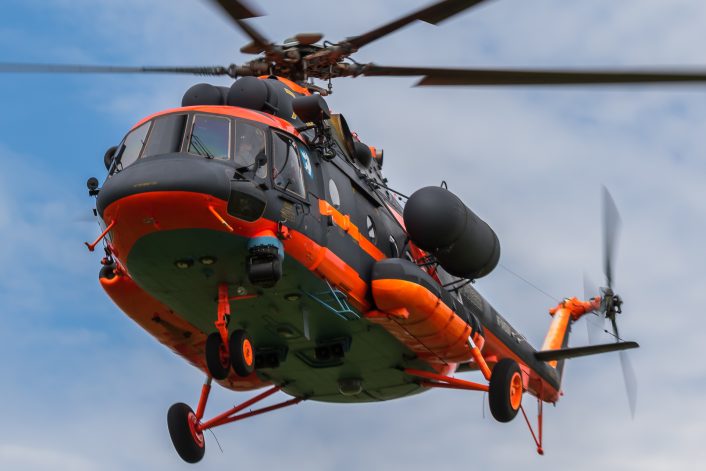
A video of the incident has emerged. It shows the helicopter moving back, then starting a rotation, climbing and then crashing into the ground. Photo and another video from the place show that, despite the fire trucks promptly intervened, they could’t help the crew too much.
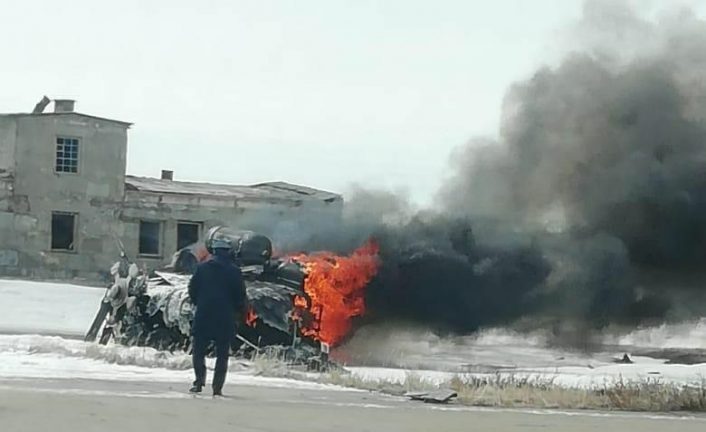
Another bad news emerged exactly one week before, late in the evening on May 19, 2020. A Mi-8 of Russian Air and Space Forces made a hard landing on a deserted area “about 08.00 PM MST, during a training flight 20 km from the city of Klin (Moscow Region). The helicopter’s crew died from injuries as a result of a hard landing”.
Again, the Ministry of Defense reports that the commission of the High Command of the Air Force flew to the scene of the disaster. “According to preliminary information, the cause of the disaster could be a technical malfunction. The flight was carried out without ammunition.” the statement said.
As the EMERCOM reports, the incident occurred in the vicinity of the village of Zakharovo.
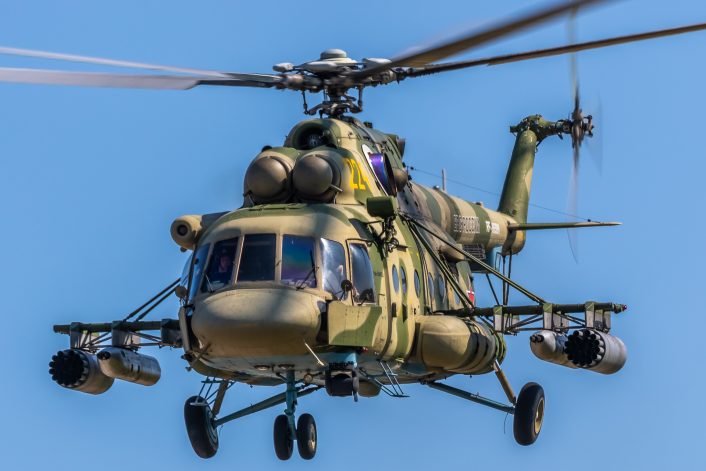
Based on reports, two helicopters from the military base Klin-5, (previously, home of 78th special military transport air squadron, now it is the 344th Center for Combat Training and Retraining of the Flight Command of Army Aviation) were performing a low level training. An eyewitness took a photo of one of the two helos, 71 Yellow, flying low above Zakharovo, heading to the training area near Udelnoe lake.
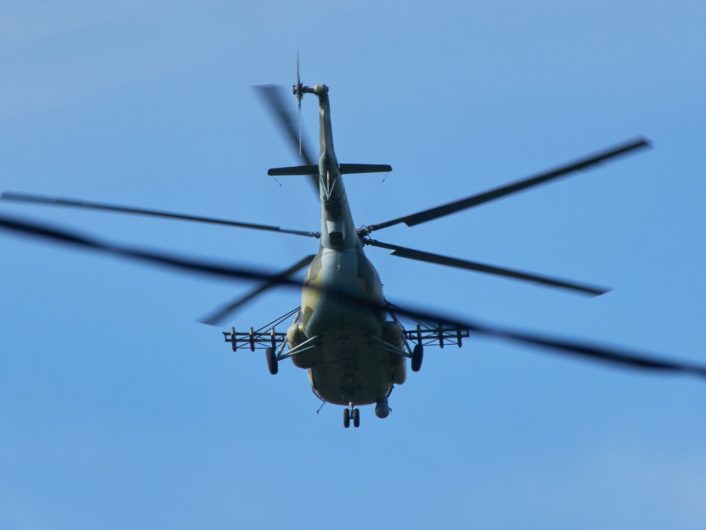
Locals told the doomed helicopter made low passes, hovering and landings in the forest and performed some aerobatics at 50-200m. At a certain point, the helicopter crew, consisting of instructors, reported technical problems on board, tried to make an emergency landing that ended in a disaster. At 19:08 Moscow time, communication with the Mi-8AMTSh helicopter in the training zone HP6 20 km north of the control point of the Klin airfield (Lake Udelnoe, Zakharovo village) was lost: the helicopter had crashed, and all three officers aboard the chopper had died.
Here’s an excerpt from the Russian MOD report:
At the FEO command, the Mi-8 helicopter performed a visual search in the aerobatic zone.
Finding a helicopter lying on its side, the Mi-8 made a landing and CPT commanded the on-board technician to visually inspect the aircraft.
The Mi-8AMTSh crew was in the cockpit of the aircraft, and at 20:37, the search and rescue helicopter flew from Torzhok airfield, landing at the scene of the accident at 21:15. By the time of discovery, rescuers of the EMERCOM were nearby.
The S&RO helicopter crew dropped off the S&R group and flew to the Klin airfield, landing at 22:05. S&R group of 10 people from the Klin airfield drived to the scene at 20:35, arrived at 21:00.
Later, additional reports emerged that locals, driving nearby, saw the helicopter low above forest, performing “rotation around main rotor, about 10 times and then falling down from a height of about 100 m, then a black smoke but no fire”. Civilians managed to get to the place, then the guys from the EMERCOM appeared. They told them not to come any closer – the locals could observe from a distance of about 200 meters. The helicopter was lying on its side, 10 meters from the edge of the nearest lake.
Next day the crashed Mi-8 was lifted from the crash site by Mi-26 and transported to the base.

Before this incident, less than month ago, on May 7, 2020 a Mi-35 reported engine malfunction and performed hard landing 600 m short of runway in Dzhankoy, north of the Crimea peninsula.
Susanna Mirzaeva, local citizen, witnessed the landing.
“He just flew. He began to slow down and was already descending behind a green fence along the road. And then suddenly it began to fly abruptly nose down, – said Susanna. – I was still watching, and I think he will not have time to recover. And then he decided, apparently, to sharply turn up so as not to collide with nose down. And when he lifted nose up, the tail touches the ground. There was a feeling that it just folded in half. He collapsed with a roar, dust in the sky. ”
As she said, immediately after the crash there was “deathly silence” – no explosion, no people screaming. Cars started to stop along the road. “The ambulance reacted very quickly. Literally in a split second they were in place, ”Susanna said.
A lot of eyewitnesses were there as two or three Mi-35s did low level training flights in the area, including very low passes close to the public as part of Victory Day parade training.
Here’s a video by Elena Isachenko via Kryminform:
Hard landing was reported in the media around 19.00 local time with tree crew seriously injured and rushed to the hospital (question aroused, however, why there was technician aboard at this flight) with Commander in critical condition. At around 20.00 he was reported as not survived to the incident.
Later, information leaked from sources close to the air base that Mi-35 suffered engine malfunction (engine fire) and was on approach when, following the procedure, crew switched wrong engine at the moment helicopter was above middle marker antennae. It went down, hit small brick hut and stopped inside middle marker fence.
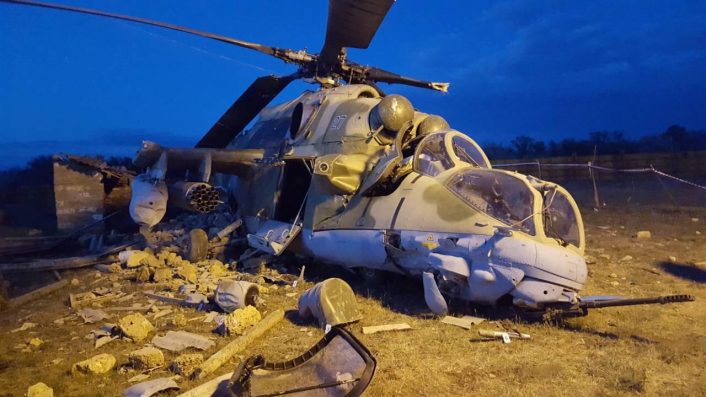
While the root cause of the incident is being investigated, we can’t but notice that there are some similarities in the three aviation safety events: for two of them – low level trainings and visibly intact rotors (main rotor in case of Mi-35, which is an indirect evidence of both engines switched off; tail rotor in Mi-8 incident, which – with eyewitnesses testimony about rotation – seems to point to tail rotor malfunction). In the third, and more recent incident, once again, low level flying (that is obviously quite frequent for rotary wings) and a technical malfunction.

